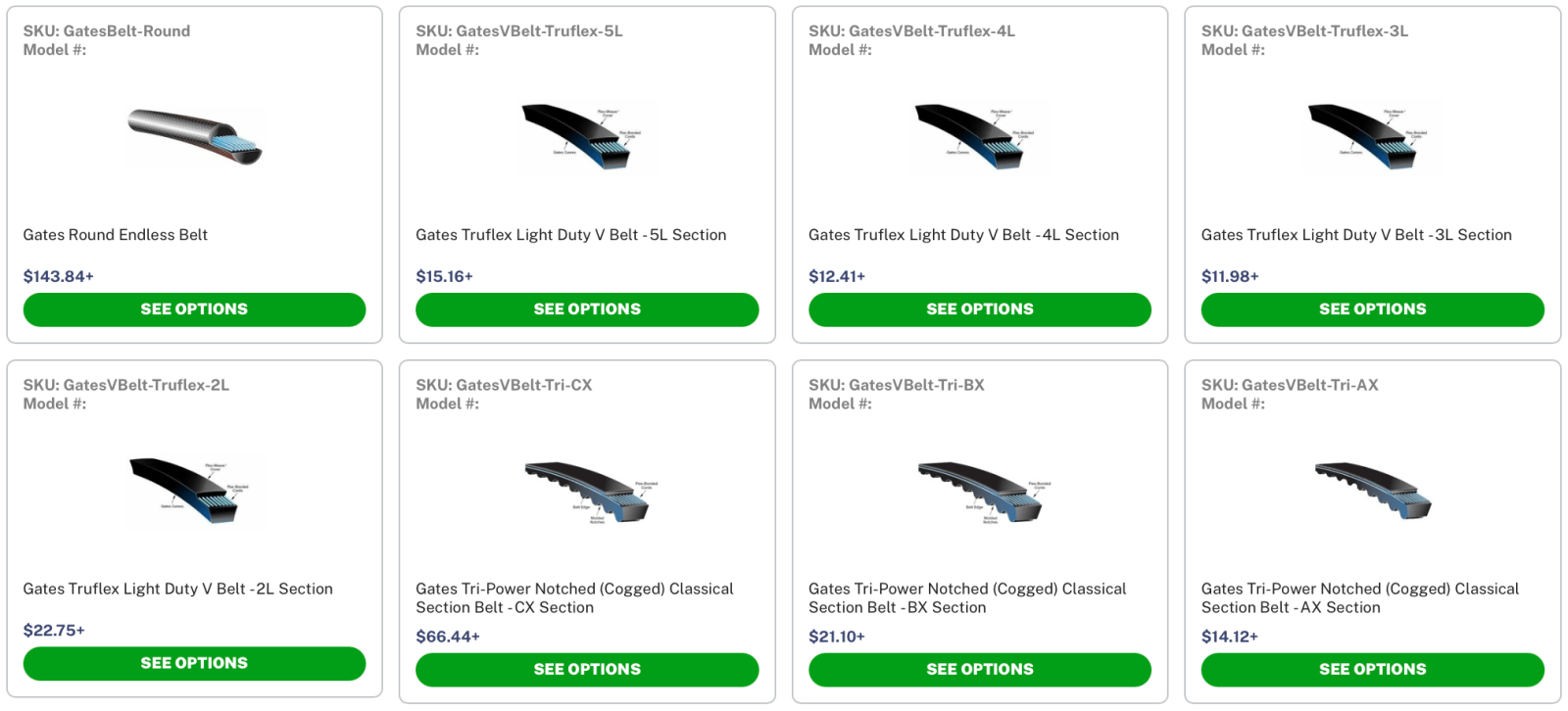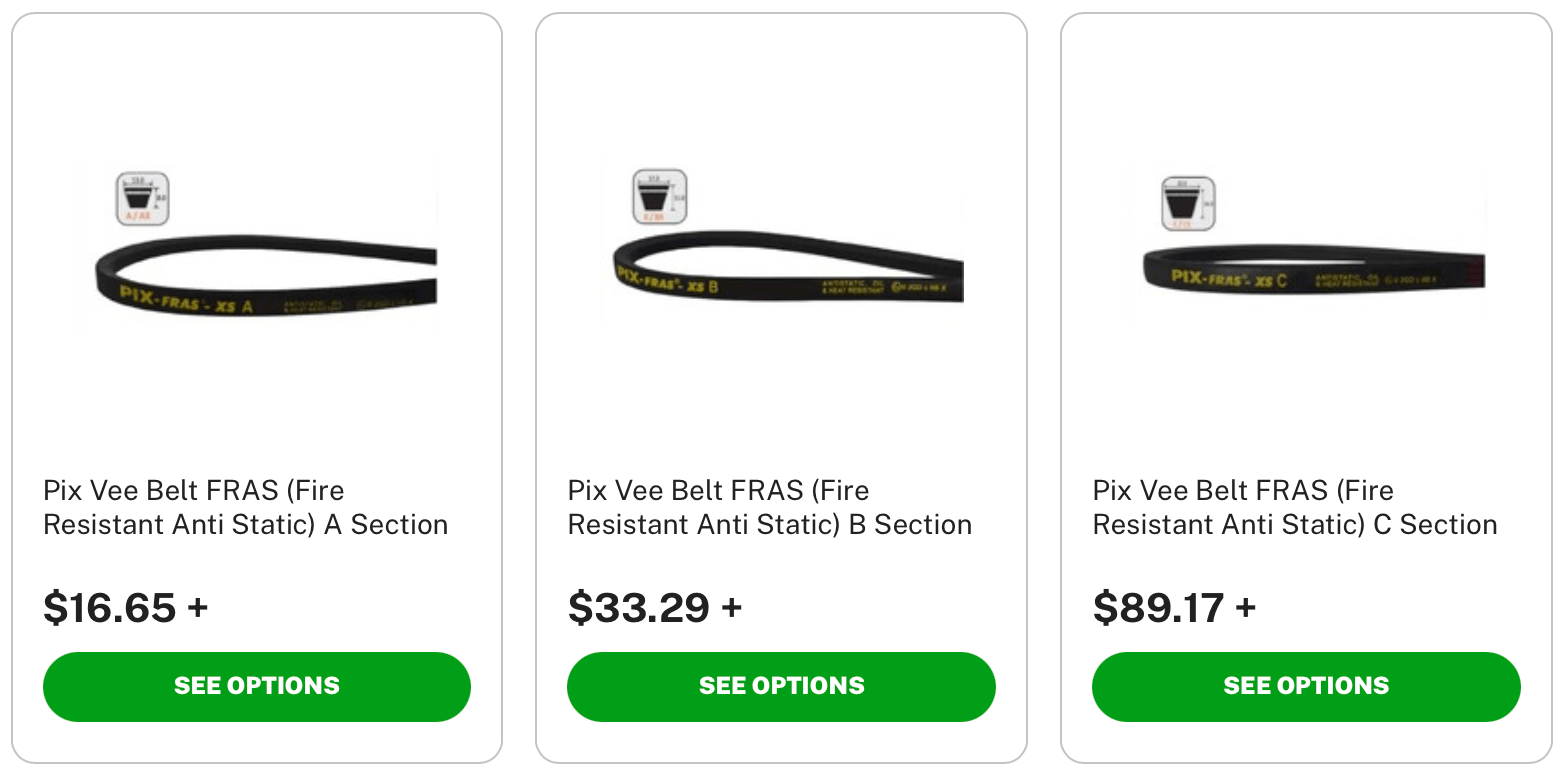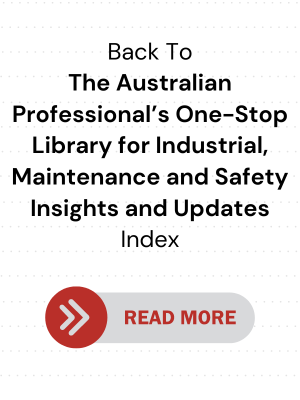FAQs on Fire-Resistant Anti-Static (FRAS) Belts

.png)
When things get hot and materials are flammable, your everyday industrial belt won't cut it. That is where FRAS belts come in.
In this article, we answer these questions:
- How are FRAS belts different from regular belts?
- What benefits do they offer over regular belts?
- What are the differences between anti-static, fire-resistant and FRAS belts?
- Are heat-resistant and oil-resistant belts just as good as FRAS belts?
- Which industries use FRAS belts?
- Are PIX FRAS belts good?
How are FRAS belts different from regular belts?
FRAS belts are much like your regular industrial belts in terms of construction and function, and both serve the same core purpose of transmitting power or moving materials. Nevertheless, here are what make FRAS belts different:
- Fire resistance: As the name implies, FRAS belts are made of compounds that resist ignition and, at least, limit the spread of fire if it ever does ignite from an external source.
- Anti-static properties: FRAS belts are engineered to dissipate static electricity to prevent dangerous sparks that could potentially ignite flammable materials.
- Materials: FRAS belts use specific compounds designed to resist ignition, slow fire spread and dissipate static electricity. These materials are not present in standard industrial belts.
- Applications: FRAS belts are designed for specific environments where fire hazards, flammable dust or vapors are present, such as in petrochemical and mining plants.
- Certifications: FRAS belts often carry safety certifications that regular belts don’t have. For instance, the PIX belts that we sell are ATEX-certified (for explosive atmospheres). Other brands have ISO1813 (fire resistance standards).
- Cost: FRAS belts are generally more expensive due to specialised materials and manufacturing processes.
Note: They are not necessarily better than regular and anti-static / static-conductive / static-dissipating belts.
What benefits do they offer over regular belts?
- Insurance benefits: Using FRAS belts could potentially lower your premiums due to their reduced risk profile, thereby practically justifying (and offsetting) their higher price.
- Prevention of static-induced hazards: Because they are designed to significantly reduce static buildup, they prevent ignition of flammable substances in the surrounding area.
- Reduced fire risk: They are made by design to minimise the chance of a fire starting due to the belt itself.
What are the differences between anti-static, fire-resistant and FRAS belts?
| Property | Anti-static belt | Fire-retardant belt | FRAS belt |
| Fire resistance | No | Yes | Yes |
| Static dissipation | Yes | No | Yes |
Anti-static belts (aka static-conductive / static-dissipating belts)
- Primary function: They are designed specifically to prevent the buildup of static electricity, which is common in industrial settings where moving belts can generate a significant buildup of static charge. A static-conductive belt safely channels this electricity away, preventing sparks and potential hazards. Most Gates belts we sell are specified as static-conductive and ISO 1813-certified:

- Fire safety: They offer no inherent fire resistance, so they can still ignite and contribute to a fire if exposed to flame or high heat.
- Applications: They are useful in environments where static discharge could damage sensitive electronics or create sparks that ignite flammable vapors or dust, such as in (1) electronics manufacturing, where static electricity can damage sensitive components, and (2) packaging, where static can make materials cling and cause production / quality issues.
Note: Anti-static belts that are not fire-resistant may still pose a hazard if they come into contact with flames or extreme heat, so do not use them in places strictly specified for FRAS belts.
Fire-retardant belts
- Primary function: They are manufactured with materials that resist ignition, practically lowering the possibilities of catching fire and slowing down the spread of flames.
- Static protection: They don’t usually have any anti-static properties.
- Applications: They are suitable for environments where there is a risk of the belt itself catching fire but where static buildup is not a major concern.
Note: All FRAS belts are fire-retardant, but not all fire-retardant belts are FRAS. If you need protection from both fire spread and static electricity hazards, FRAS is the way to go.
Fire-Resistant Anti-Static (FRAS) Belts
- As discussed in earlier points, they combine the properties of both anti-static and fire-retardant belts, so they can both (1) resist fire spread and (2) dissipate static electricity, such as these PIX belts:

Are heat-resistant and oil-resistant belts just as good as FRAS belts?
They are inherently different, and they are not interchangeable in terms of application. Here they are side-by-side:
|
Feature |
Heat-resistant belt |
Oil-resistant belt |
FRAS belt |
|
Primary purpose and ideal applications |
Transporting hot materials (eg furnaces) |
Transporting oily materials (eg food processing) |
Preventing ignition and static buildup in flammable environments (eg underground mines) |
|
Material focus |
High temperature resistance |
Oil resistance |
Fire resistance and anti-static properties |
|
Fire resistance |
No |
No |
Yes |
|
Static dissipation |
No |
No |
Yes |
|
Temperature resistance |
High resistance -- up to 250° C (depending on grade) |
Limited, often low or moderate |
Some are heat-resistant |
|
Oil resistance |
Limited, as some variants have basic resistance |
High resistance |
Some are oil-resistant |
|
FRAS properties |
No |
No |
Yes |
Which industries use FRAS belts?
They are ideal for – and most of the time, needed for safety compliance in -- hazardous environments with both fire risks and potential for static electricity buildup, such as in:
- Mining where there are underground coal dust and potential methane and gas leaks
- Grain handling and woodworking where there could be explosive sawdust and similar flammable dust particles
- Chemical and petrochemical plants where even a tiny spark where flammable vapors are present could start fires.
- Any environment with flammable dust where it -- if accumulated or confined in surfaces -- could come into contact with a heat source or spark that can ignite and trigger combustion
Are PIX FRAS belts good?
Yes, they generally have a good reputation and are considered reliable for their intended purpose, thanks to their:
- Certifications: PIX FRAS belts comply with important safety standards, namely ATEX (specially designed for safe use in potentially explosive atmospheres, such as these FRAS v-belts), ISO 1813 (anti-static requirements to reduce the risk of sparks in flammable environments) and IS 2494 Part-II (fire resistance standards important in mining and other potentially hazardous settings).
- Specialised construction: They are manufactured with special rubber compounds formulated to resist fire and minimise static buildup and discharge.
- Range of options: PIX offers various FRAS belts (XC, XS, XR) catering to different applications, drive configurations and temperature requirements.
- Manufacturer reputation: PIX Transmissions is an established belt manufacturer with a global presence, known for quality products.
Bottom line: The best type of belt depends on the specific hazards within your work environment. It is best to consult with a relevant, qualified engineer if you are unsure of what belt to specify.
If the job involves fire hazards, err on the side of caution. Don't gamble with standard industrial belts and go with FRAS belts instead, as they provide the most comprehensive protection and offer a vital line of defense for those "just in case" moments.
Need help? Please email us at sales@aimsindustrial.com.au.
AIMS' Note on Safe Use of Belt-Driven Systems
- Power down: Before any inspection, maintenance, or adjustment, make sure to completely shut down the power to the machine and apply a lockout/tagout (LOTO) device to prevent accidental restarts.
- Right belt for the system: Keep in mind that v-belts (especially cogged / notched / wrapped belts) are different from synchronous /timing / ‘toothed’ belts. Some mistake the cogs for teeth but remember that cogged belts run on V-shaped pulleys that do not have teeth. Are you operating where flammable substances are present? Maybe you need fire-resistant anti-static (FRAS) belts – or maybe heat-resistant and oil-resistant belts will do. We compared them in this FAQ.
- Safe attire: Avoid loose clothing, jewelry and long hair that could get caught in the moving parts. Ensure proper fit of workwear without compromising comfort, dexterity and protection. Tie back long hair and secure loose items.
- Safeguards in place: Never operate a belt-driven system with the guards removed or bypassed. These guards are there for your protection.
- Maintenance and replacement: Regularly inspect belts and pulleys for wear and tear. Maintain proper belt tension and alignment as specified by the manufacturer. When replacing the belt, make sure you get the proper fit and measurement of the system. These accessories and maintenance kits (eg alignment tools, belt measurers, pulley gauge sets, spacers, tensioners etc) come in handy.
- Cleanliness: Keep the area around belt drives free of debris and clutter that could get caught or cause a fire hazard.
(Refer to our content library's sub-index of articles about belt-driven systems and electric motors for more information.)



.png)